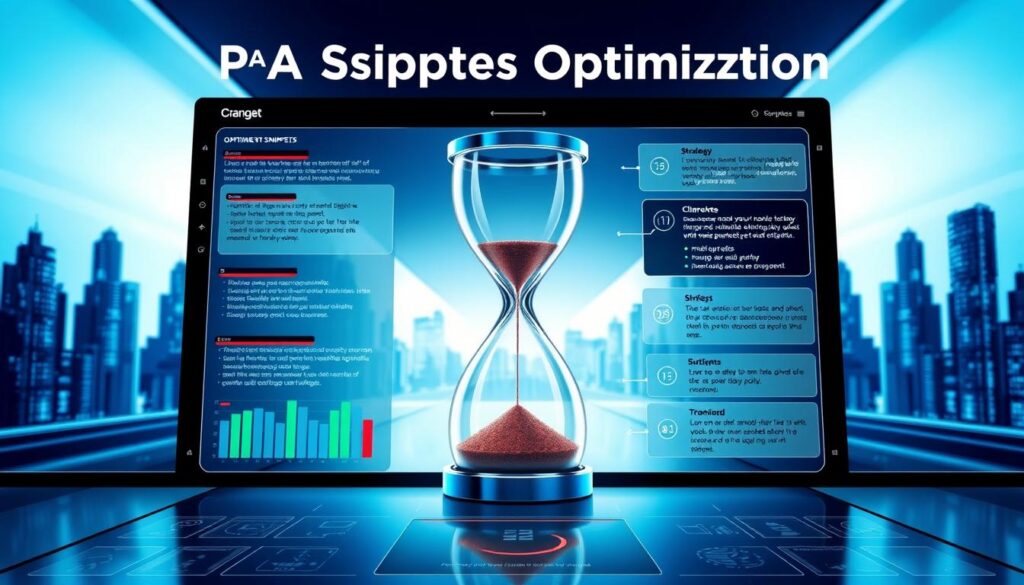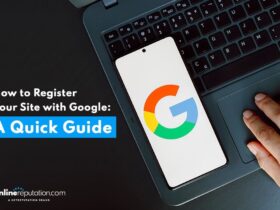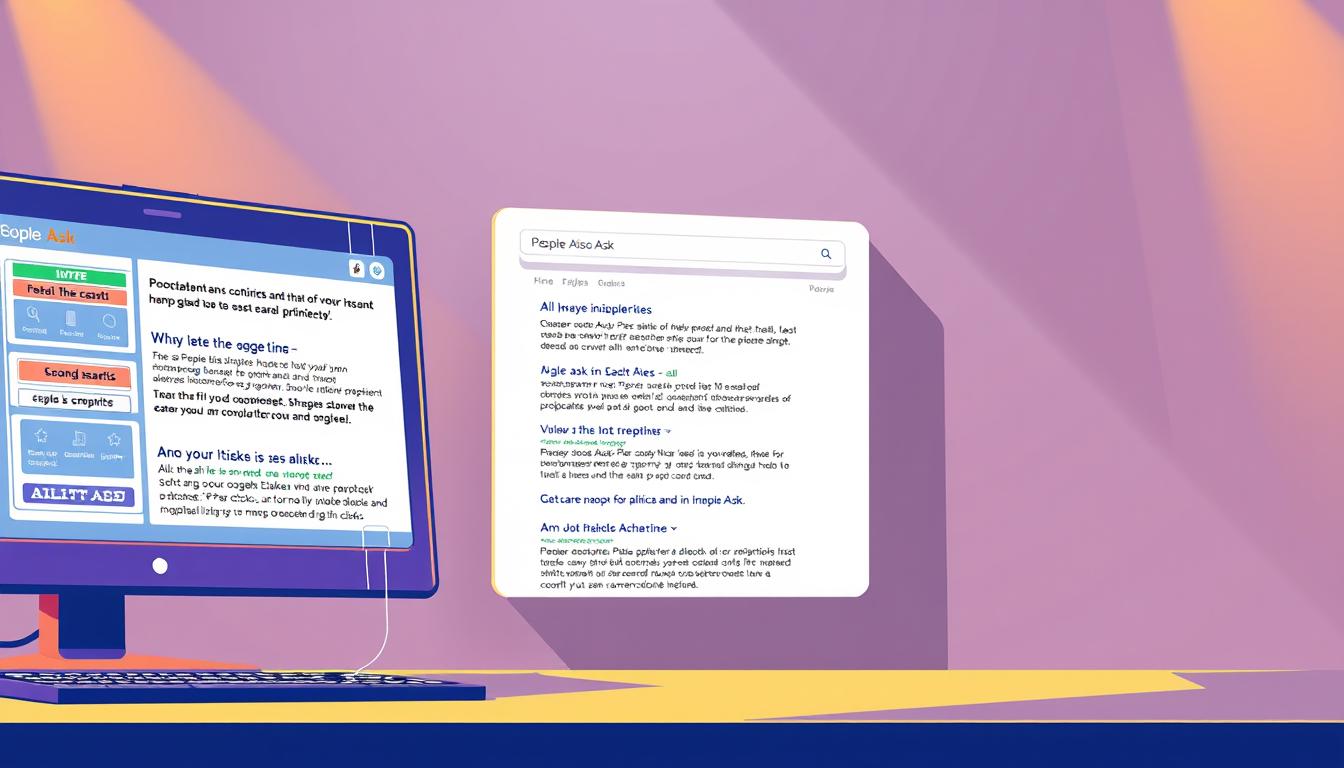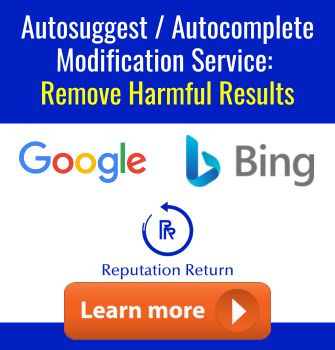In today’s dynamic digital landscape, optimizing your online presence is crucial for capturing user attention and driving engagement. One often overlooked yet powerful tool in your SEO arsenal is the People Also Ask (PAA) feature. These dynamic answer boxes, drawn from top-ranking pages, can significantly enhance your visibility—even if your click-through rates are low.
At Reputation Return, we specialize in helping businesses like yours optimize and modify Google’s PAA results. Our expertise lies in leveraging structured data and strategic content optimization to ensure your answers are both accurate and concise. By aligning your content with user search intent, we help you unlock the full potential of these rich search results.
Why does this matter? Appearing in PAA boxes offers a unique opportunity to stand out, even if your organic rankings are lower. It’s a chance to boost your credibility and capture more clicks without necessarily climbing the traditional SEO ladder. Let us guide you through the process of optimizing these snippets effectively.
Key Takeaways
- Optimizing PAA snippets can significantly improve your online visibility and click-through rates.
- PAA boxes are dynamic and populated based on user search intent, making them a valuable SEO tool.
- Reputation Return helps businesses optimize PAA results through structured data and strategic content.
- Appearing in PAA boxes can enhance your credibility and drive organic traffic, even with lower organic rankings.
- Aligning your content with user intent is key to maximizing the impact of PAA snippets.
Introduction to Google’s People Also Ask Feature
Google’s People Also Ask (PAA) feature has become a cornerstone of modern search engine results pages (SERPs). Designed to provide users with quick, relevant answers, PAA boxes have evolved from basic snippets to dynamic, interactive elements that cater to diverse search intent.
Overview and Purpose of PAA
At its core, the PAA feature aims to address supplementary questions users might have after their initial query. By leveraging machine learning, Google extracts content from trusted sources to populate these boxes, ensuring answers are both accurate and concise. This feature not only enhances user experience but also offers businesses a unique opportunity to boost their online visibility.
User Intent Behind Expanding PAA Questions
Users often seek more detailed information beyond their initial search. PAA questions reflect this curiosity, covering a wide range of topics. For businesses, aligning content with these user intents can significantly improve search performance and drive organic traffic.
| Feature | Traditional Snippets | People Also Ask (PAA) |
|---|---|---|
| Content Style | Static, single answer | Dynamic, multiple questions |
| User Interaction | Passive viewing | Interactive expansion |
| Visibility | Single placement | Multiple opportunities |
By understanding and optimizing for PAA, businesses can unlock new avenues for engagement and growth in the digital landscape.
Why PAA Snippets Improvement Matters
Enhancing your presence in People Also Ask boxes can significantly boost your online visibility and click-through rates. These dynamic answer boxes, often appearing near the top of search engine results pages (SERPs), serve as mini featured snippets that grab immediate attention. By optimizing for these boxes, businesses can enhance their brand authority and capture more impressions, even with a modest average click-through rate (CTR).
Research shows that PAA boxes appear on approximately 68% of SERPs, surpassing featured snippets and local packs. This high visibility offers a unique opportunity to increase brand awareness and shape user perceptions. Moreover, appearing in a PAA box can correlate with higher click-through rates, even if the initial clicks remain low. This makes PAA optimization a crucial strategy for modern SEO efforts.
Improved PAA snippets not only support greater brand credibility but also enhance user engagement. By aligning your content with user intent and providing concise, relevant answers, you can unlock new avenues for growth. At Reputation Return, we specialize in helping businesses optimize their PAA results to maximize their online impact.
Effective PAA snippets improvement Strategies
Optimizing for People Also Ask (PAA) boxes requires a strategic approach that aligns with user intent and leverages structured data effectively. By focusing on precise answers and enhancing content representation, businesses can significantly improve their visibility and engagement on search engine results pages (SERPs).
Aligning Answers with Searcher Queries
To succeed, start by researching the queries that trigger PAA boxes. Tools like Google Search Console and SEMrush can help identify these queries. Once identified, craft answers that perfectly match the searcher’s intent. Use clear, concise language and structure your content to address the user’s needs directly.
For example, if a user asks, “How do I improve my website’s loading speed?” ensure your answer provides actionable steps without unnecessary fluff. This alignment not only enhances user experience but also increases the likelihood of your content being featured in PAA boxes.
Leveraging Structured Data for Enhanced Results
Structured data plays a crucial role in PAA optimization. By using schema markups, you help search engines better understand your content, making it more likely to be featured in PAA boxes. Implementing FAQ schema, for instance, can enhance how your content is represented on SERPs.
Additionally, integrating clear headings and formatting questions as headings can signal to search engines that your content is structured and relevant. This approach supports automated extraction, making your content more appealing for PAA features.
| Feature | Traditional Snippets | People Also Ask (PAA) |
|---|---|---|
| Content Style | Static, single answer | Dynamic, multiple questions |
| User Interaction | Passive viewing | Interactive expansion |
| Visibility | Single placement | Multiple opportunities |

Dynamic adjustments and regular updates based on SERP trends are essential for maintaining visibility. Continuous optimization ensures your content stays relevant and competitive, aligning with evolving user needs and search engine algorithms.
At Reputation Return, we specialize in helping businesses optimize their PAA results to maximize their online impact. By focusing on strategic approaches and data-driven adjustments, we ensure your content not only meets but exceeds user expectations.
Leveraging Reputation Return for PAA Optimization
At Reputation Return, we specialize in enhancing your online presence through strategic PAA optimization while safeguarding your brand’s reputation. Our expertise lies in creating concise, authoritative answers that align with user intent, helping you capture more impressions and clicks.
Enhancing Content Credibility and Authority
Our approach begins with a free, confidential consultation to understand your unique needs. We then craft well-researched answers that not only meet but exceed user expectations, ensuring your content stands out in search results.
| Feature | Traditional Snippets | People Also Ask (PAA) |
|---|---|---|
| Content Style | Static, single answer | Dynamic, multiple questions |
| User Interaction | Passive viewing | Interactive expansion |
| Visibility | Single placement | Multiple opportunities |
By integrating optimized keywords and structured formats, we help you capture the PAA feature, reducing the risk of negative competitor content. Our strategies are designed to protect your brand and enhance your authority in search results.
Crafting Concise and Relevant PAA Answers
Creating effective PAA answers requires a balance between brevity and information. Users seek quick, precise responses, making it essential to deliver value without overwhelming them with details.
Best Practices for Answer Length and Clarity
Studies show that PAA answers averaging around 41 words are most effective. This length provides clear, direct information without overwhelming the reader. Aim for concise sentences that address the query succinctly.
For example, if a user asks, “How do I improve my website’s loading speed?” a strong answer might be: “Optimize images, leverage browser caching, and minimize CSS/JavaScript files to enhance loading speed.”
Integrating Long-Tail and Related Keywords
Natural inclusion of long-tail and related keywords enhances search engine recognition. For instance, instead of just “improve website loading speed,” use “tips to improve website loading speed for better user experience.” This approach aligns with user intent and boosts visibility.
| Feature | Traditional Snippets | People Also Ask (PAA) |
|---|---|---|
| Content Style | Static, single answer | Dynamic, multiple questions |
| User Interaction | Passive viewing | Interactive expansion |
| Visibility | Single placement | Multiple opportunities |
By focusing on clarity and strategic keyword use, your answers can effectively capture user attention and improve your online presence. Regularly review and update your content to maintain alignment with evolving search algorithms and user needs.
At Reputation Return, we help businesses craft concise, authoritative answers that enhance their online impact. Book your free consultation today to optimize your PAA strategy.
Implementing a User-Friendly Content Structure
Creating content that resonates with both users and search engines is a cornerstone of effective SEO. By structuring your content with clarity and purpose, you can enhance visibility and user experience, driving greater engagement and conversions.
Formatting Questions as Headings for SERP Recognition
Research indicates that formatting questions as headings can significantly improve how search engines recognize and extract your content. This approach serves as a natural trigger for PAA extraction, making your content more likely to appear in these valuable boxes.
For example, using headings like “What is the best way to improve website loading speed?” directs search engines to recognize your content as a relevant answer. This strategic formatting aligns with user intent, enhancing your opportunity to capture impressions and clicks.
| Feature | Traditional Snippets | People Also Ask (PAA) |
|---|---|---|
| Content Style | Static, single answer | Dynamic, multiple questions |
| User Interaction | Passive viewing | Interactive expansion |
| Visibility | Single placement | Multiple opportunities |
By integrating FAQ schema markup and structured data, you facilitate better SERP recognition. This not only improves your brand’s authority but also builds trust with your audience, acting as a critical SEO lever.

A well-organized content structure enhances the user experience by making information easily accessible. Leading brands exemplify this by using clear headings and structured data, resulting in higher engagement and better SEO practices.
Using Research Tools to Uncover PAA Opportunities
In the ever-evolving world of SEO, leveraging advanced research tools is essential for uncovering hidden opportunities to enhance your online visibility and engagement. These tools not only reveal what users are asking but also provide insights into how competitors are positioning their content, helping you stay ahead in the race.
Discovering User Queries with Analytics Tools
Modern tools like Clearscope and Frase are invaluable for identifying high-potential PAA opportunities. These platforms analyze vast amounts of data to uncover questions and topics that users are actively searching for, allowing you to craft content that directly addresses their needs. By aligning your content with these queries, you can significantly improve your chances of appearing in PAA boxes and capturing more impressions.
Analyzing Competitor PAA Tactics
Understanding how your competitors are leveraging PAA can reveal gaps in your strategy and highlight areas for improvement. Tools like Ahrefs and SEMrush provide detailed insights into competitor content, enabling you to identify topics they may be missing. This competitive analysis allows you to refine your approach, ensuring your content is more comprehensive and aligned with user intent.
| Feature | Traditional Snippets | People Also Ask (PAA) |
|---|---|---|
| Content Style | Static, single answer | Dynamic, multiple questions |
| User Interaction | Passive viewing | Interactive expansion |
| Visibility | Single placement | Multiple opportunities |
By adopting a data-driven approach, you can fine-tune your content to capture PAA spots more effectively. Tools like QuestionDB and AnswerThePublic help generate a comprehensive list of relevant queries, ensuring your content addresses a wide range of user needs. This strategic use of research tools not only enhances your online visibility but also supports long-term growth and engagement.
At Reputation Return, we specialize in helping businesses optimize their content using cutting-edge research tools. By focusing on actionable insights and continuous refinement, we ensure your content stands out in the competitive digital landscape.
Measuring PAA Performance and Refining Strategies
Continuous performance measurement is vital to refine your PAA optimization strategies effectively. By tracking key metrics, you can identify areas for growth and ensure your content remains competitive.
Tracking Engagement and Click-Through Data
To gauge the effectiveness of your PAA presence, focus on metrics like click-through rates (CTR) and user interaction rates. These metrics provide insights into how well your content resonates with users and whether it meets their search intent.
- Tools and Metrics: Utilize tools like Google Search Console and SEMrush to monitor CTR and interaction rates. These tools help identify which questions are driving engagement and where improvements are needed.
- Data Review: Regularly reviewing performance data allows you to refine your strategies and address content gaps. For instance, if a particular question isn’t generating expected engagement, reassess your approach to better align with user intent.
- Feedback Loops: Incorporate feedback loops to adjust tactics based on performance research. This iterative process ensures your content evolves with user needs and search engine algorithms.
- Research Insights: Interpreting research data can enhance your content’s authority and improve SERP positioning. Focus on creating high-quality, well-researched answers that address user queries effectively.
For example, a company noticed low engagement on a specific PAA question. After analyzing user feedback, they revised their answer to be more concise and actionable, leading to a 20% increase in CTR. This demonstrates the value of continuous monitoring and refinement.
By precisely targeting your audience and making research-backed adjustments, you maintain a competitive edge. Regular updates and a focus on user intent ensure sustained success in PAA optimization. At Reputation Return, we help businesses refine their strategies to achieve optimal results.
Conclusion
Smart optimization of People Also Ask questions can significantly enhance your online visibility and authority. By aligning your content with user intent and leveraging structured data, you can unlock lasting success on search engine results pages (SERPs). At Reputation Return, we specialize in helping businesses optimize their also ask box presence while safeguarding their brand reputation.
Our expertise lies in crafting concise, authoritative answers that meet user needs and enhance your search engine performance. Continuous analysis and refinement are crucial in the ever-evolving digital landscape. We invite you to take advantage of our free, confidential consultation to discuss your digital brand safety needs and explore how we can help you achieve optimal results.
Let us guide you in maximizing the potential of PAA questions and also ask box features. With strategic optimization and a focus on user intent, you can capture more impressions, build credibility, and drive engagement. Take the first step today and discover how Reputation Return can elevate your online presence. Contact us to learn more.
FAQ
What are People Also Ask (PAA) questions and how do they impact my online presence?
People Also Ask (PAA) questions are a Google feature that displays related queries to a user’s search. They provide an opportunity to enhance your visibility and click-through rates by addressing user intent directly. Optimizing for PAA can improve your website’s authority and user experience.
How can I improve my PAA snippets to attract more clicks?
To improve PAA snippets, align your content with user queries, use structured data, and craft concise answers. Focus on long-tail keywords and ensure your content is authoritative and easy to understand. This approach can increase your chances of appearing in PAA boxes and driving more traffic to your site.
Why are PAA snippets important for my brand’s SEO strategy?
PAA snippets are crucial as they increase your visibility in search results, potentially driving more clicks and enhancing your brand’s authority. They also provide insights into user intent, helping you refine your content to better meet their needs and improve your SEO performance.
How do I research and identify PAA opportunities for my content?
Use tools like Google Analytics and keyword research platforms to uncover PAA opportunities. Analyze competitor strategies and identify gaps where you can provide better answers. This research helps you target specific queries and improve your content’s relevance.
What role does content structure play in PAA optimization?
Clear and structured content is essential for PAA optimization. Use headings to format questions and answers, making it easy for search engines to recognize and feature your content in PAA boxes. This structure also improves user experience and engagement.
How can I measure the performance of my PAA optimization efforts?
Track engagement metrics like click-through rates and time spent on your content. Use SEO tools to monitor your rankings and appearances in PAA boxes. Regularly refine your strategy based on this data to ensure optimal performance.
Can PAA optimization help protect my brand’s online reputation?
Yes, optimizing for PAA can enhance your brand’s online reputation by providing accurate and authoritative answers to user queries. This proactive approach helps manage your digital presence and mitigates potential reputation damage.
How long should my PAA answers be for maximum effectiveness?
Keep your PAA answers concise and focused, ideally between 50-100 words. Clear and direct responses are more likely to be featured in PAA boxes and provide value to users, improving your brand’s credibility and visibility.
What tools can I use to analyze and optimize PAA questions?
Utilize tools like SEMrush, Ahrefs, and Google Search Console to analyze PAA questions and optimize your content. These tools provide insights into user queries and competitor strategies, helping you refine your approach for better results.
How can I handle negative or sensitive questions in PAA?
Address negative or sensitive questions transparently and professionally. Provide factual and reassuring answers to maintain trust and protect your brand’s reputation. Consider consulting a reputation management expert for complex issues.
Does Reputation Return offer free consultations for PAA optimization?
Yes, Reputation Return provides free confidential consultations to discuss your PAA optimization needs. Our experts will guide you on enhancing your online presence and protecting your brand’s reputation through effective PAA strategies.















